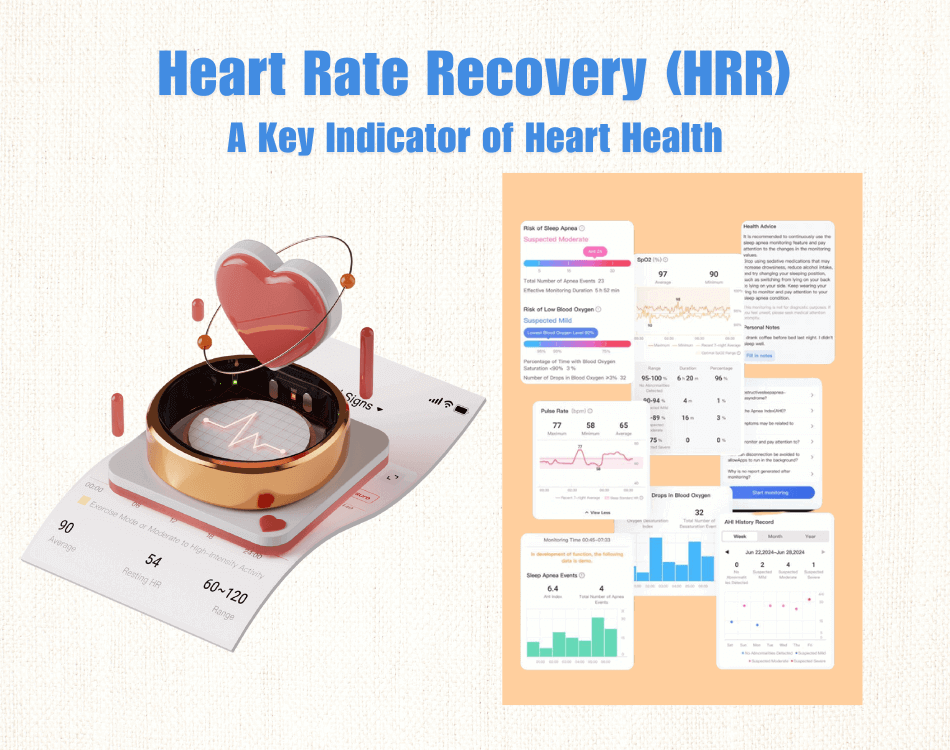Unlocking the Secrets of 30 BPM: What Your Heart Rate Recovery Reveals About Your Fitness and Health!
Heart rate recovery is a crucial indicator of cardiovascular fitness and overall health. It measures how quickly your heart rate returns to its resting level after exercise, providing insights into your heart's efficiency and your body's ability to recover. A 30 bpm heart rate recovery signifies that your heart rate decreases by 30 beats per minute within the first minute after stopping exercise, which is considered a healthy benchmark for many fitness enthusiasts. Understanding this metric can help you assess your fitness levels and guide your health journey. In this article, we will delve deeper into what a 30 bpm heart rate recovery means, how it reflects your fitness and health status, and practical ways to improve this vital sign.

Understanding Heart Rate Recovery
Heart rate recovery refers to the speed at which your heart rate returns to baseline levels following physical activity. This recovery is a measure of cardiovascular fitness and is influenced by various factors, including the intensity of the exercise and the individual's fitness level. To measure heart rate recovery, you typically take your heart rate immediately after exercise and again one minute later. The difference between these two readings indicates how well your body is recovering. A recovery of 30 bpm is a positive sign, suggesting that your cardiovascular system is functioning efficiently. It reflects not just fitness but also the capacity of your autonomic nervous system to regulate heart activity, further emphasizing its importance in overall health assessment.
The Science Behind 30 BPM Recovery
The physiological mechanisms that facilitate heart rate recovery involve the autonomic nervous system, which regulates involuntary bodily functions, including heart rate. After intense exercise, the sympathetic nervous system (responsible for the "fight or flight" response) is dominant, causing an elevated heart rate. As you rest, the parasympathetic nervous system kicks in, promoting relaxation and decreasing heart rate. Factors influencing recovery rates include age, fitness level, medications, and overall health. For instance, younger individuals and those who regularly engage in cardiovascular exercise tend to have quicker recovery rates. A 30 bpm recovery rate indicates a well-conditioned heart, capable of efficiently transitioning from exertion to rest, which is vital for overall cardiovascular health.
30 BPM Recovery and Fitness Levels
A 30 bpm heart rate recovery is often associated with higher fitness levels. In general, the faster your heart rate returns to normal, the better your cardiovascular health is likely to be. For comparison, a recovery rate of 12-20 bpm may indicate average fitness, while anything below this could suggest a need for improvement. Individuals who regularly engage in endurance training, such as runners or cyclists, often achieve recovery rates in the 30 bpm range or higher. It's worth noting that while a 30 bpm recovery is a good benchmark, individual differences exist, and various factors like training type, frequency, and duration can influence these rates. Monitoring these changes over time can provide a more comprehensive picture of your fitness journey.
Health Implications of Heart Rate Recovery
Having a 30 bpm heart rate recovery can indicate several positive health outcomes. It suggests good cardiovascular health, which is crucial for preventing heart disease and other related conditions. Moreover, it reflects your body’s ability to handle stress efficiently and recover from physical exertion, highlighting your endurance levels. Studies have shown that individuals with slower recovery times are at a higher risk for cardiovascular events. Therefore, a recovery rate of 30 bpm can serve as an encouraging sign of not only your fitness status but also your overall well-being. It emphasizes the importance of maintaining an active lifestyle to support heart health and longevity.
Improving Heart Rate Recovery
Improving your heart rate recovery can be achieved through various strategies. Regular aerobic exercise, such as running, cycling, or swimming, enhances cardiovascular fitness and promotes faster recovery. Incorporating interval training into your workouts can also be beneficial, as it helps condition your heart to handle varying levels of exertion. Additionally, maintaining a balanced diet rich in essential nutrients supports heart health and overall fitness. Lifestyle changes, such as reducing stress through mindfulness practices, ensuring adequate sleep, and staying hydrated, also play a significant role. Monitoring your heart rate recovery regularly can provide motivation and indicate progress as you strive for improved fitness.
Summary of Key Insights
In summary, understanding heart rate recovery, particularly a 30 bpm recovery rate, provides valuable insights into your fitness and health. It reflects your cardiovascular efficiency and overall well-being, making it an essential metric for anyone on a health journey. By monitoring and improving your heart rate recovery, you can take proactive steps toward enhancing your fitness levels and ensuring long-term health. Embrace this knowledge as part of your fitness regimen, and remember that every beat counts in your pursuit of health and vitality.








